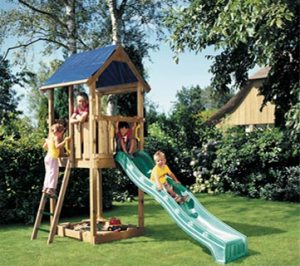Why do some homes have such exquisite landscaping while others are continually going through stages of trial and error? The major difference between landscaping that looks as if it was designed by a professional and those that appear to have no design alone is a lot of thought and planning (Figure 1).
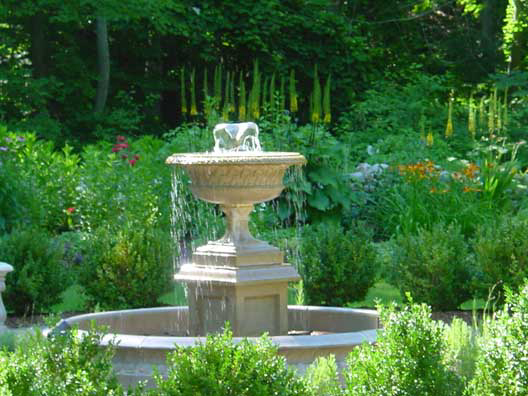
Figure 1 - Fountain in landscaping
It makes little sense to pick a landscaping look that you have seen in a southwest home and garden magazine if you live in the northeast. Like wise choosing a landscape design that was prepared for a 5,000 square foot property when you only have 500 square feet to work with, will not work.
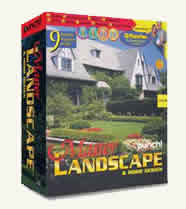
Figure 2 - Landscape Pro 3D software
Each landscape design is unique, and must take into account many things including your climate, topography of your property and the surrounding properties to ensure correct water runoff, your family and lifestyle, the physical layout of the property and of course your personal taste.
3D software is now available which allows the homeowner to see the finished landscaping project before the first shrub is planted! A good 3D landscaping software is Landscape Pro, by Punch
Secondarily you must also remember that plants of all kinds grow and that almost all plants are seasonal in their appearance. It is important that you plan that growth and seasonality into your design.
During the planning stage, you should consider if the landscaping could be beneficial to your home environment. Planting large trees can shade rooms in your home from intense sun, lowering energy costs, as well as providing privacy.
Beautiful landscaping does not require enormous amounts of space, and in fact, some of the nicest landscaping designs are incorporated into quite small areas.
A good starting point is make a list of all the things that are must haves in your landscaping. Items such as a barbeque area, swing set and sandbox for the kids, gazebo, putting green, bird house or an area where you can sit, read and just enjoy the outdoors.
Once you have identified the key items that you must have consider an overall style or theme.
There are six basic landscaping styles:
- English:
- Roman/Greek:
- Woodland:
- Oriental:
- Formal:
- Informal:
The classic English garden (Figure 3) is a compliment to the architectural style of your home and uses a combination of numerous perennials, bushes, and shrubs. Small water features are very common in this theme.
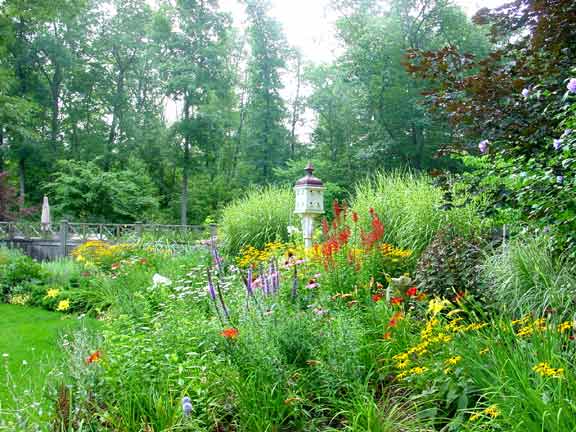
Figure 3 - English themed landscape
Using statues, fountains and columns a Roman or Greek theme (Figure 4) is usually exploited by those with a lot of extra money for their landscaping project. Individual ornaments can each be two to ten thousand dollars.
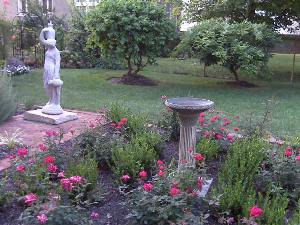
Figure 4 - Roman/Greek themed landscape
Brings the great outdoors to your property by incorporating large trees and providing a lot of shade. Large water features such as waterfalls and streams incorporate very will into the woodlands theme, as shown in Figure 5.

Figure 5 - Woodlands themed landscape
An oriental theme (Figure 6) works extremely well in smaller areas. It combines rocks with small bushes and evergreens. The use of small oriental style statues and other art works adds to the overall appearance. Water features such as waterfalls, ponds and streams can be easily incorporated into the oriental theme and foot bridges are very common. Oriental themed gardens and landscaping are designed for peace, tranquility and contemplation.
Figure 6 - Oriental themed landscape
The formal garden (Figure 7) is a showpiece that incorporates symmetrical designs and known geometric shapes all connected with very straight lines, this applies to pathways, and plant beds. The formal garden is probably the highest maintenance theme, as all plants must be continually maintained to create a high degree of uniformity.
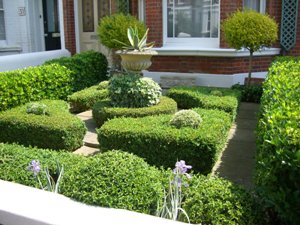
Figure 7 - Formal themed landscaping
The informal landscaping theme (Figure 8) works well with if your landscaping is to be child friendly, as it is the easiest theme to incorporate a children’s play area. Patterns are completely random and move from densely planted flowerbeds to open areas of grass.
